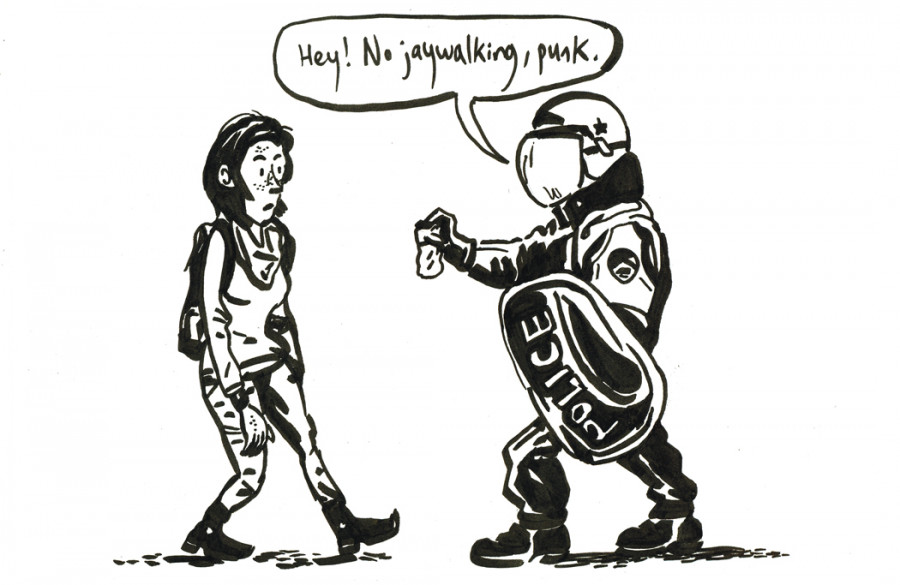Editorial: The SPVM’s Bylaw Squad
Another year, another anti-police brutality march.
At least, that was the plan.
On March 15, a few hundred people gathered in Villeray to publicly voice their opposition to excessive use of police force—or to call for the disbanding of armed police forces altogether.
It’s an annual affair, one seen internationally as a day to protest against police brutality. But since last year’s demonstration in Montreal there’s far less certainty that a march will actually take place as it used to—like last year, demonstrators were kettled before moving a block in any direction.
As soon as the march’s 3 p.m. start time arrived, the Service de police de la Ville de Montréal ended it. The demonstration was kept to a stretch of Châteaubriand Ave. near Jean Talon St., the same place a police officer was filmed threatening to tie a homeless person to a pole in the biting cold in January.
You can’t call it a march if it doesn’t go anywhere. Around 300 people were kettled for hours, eventually processed and fined hundreds of dollars under municipal bylaw P-6.
What supporters of these amendments to P-6 don’t understand is this is not an anti-police brutality parade. Asking for a parade route ahead of time is not only unnecessary but defeats the protest’s purpose.
Demonstrators aren’t waving from floats and throwing out beads. If anyone did want to watch from the sidewalk, they would be swiftly kettled like everyone else.
The demonstration was declared illegal over loudspeakers mere minutes after its start time, and any protesters who did not leave were surrounded by riot police—tear gas guns aimed at them from above.
But the SPVM had already declared this march illegal two days earlier. It’s a return of the kind of contradictory logic that was used since P-6 was amended during the Maple Spring: the march is illegal, but will be allowed to continue as long as no criminal acts are committed.
We’re too familiar with this line by now. It’s a switch that’s been flipped for something as benign—and impracticable—as walking on city streets instead of the sidewalk.
As the reporters we sent to cover the demonstration were outside the kettle, CUTV was there live streaming from a balcony. But even though they had sought the resident’s permission—and CBC was also shooting from another balcony—they were forced inside and told to shoot through a window.
All the while a ring of Sûreté du Québec officers in full riot fatigues created another circle around those kettled.
“We know most people who show up Saturday have a message, have a legitimate grievance,” said SPVM Commander Ian Lafrenière at a press conference ahead of the protest as reported by The Gazette.
But if there are legitimate grievances like Lafrenière says—and there are—the actions of the police directly contradict this. The police are saying that what Saturday’s demonstrators are fighting for is legitimate, but they aren’t allowed to have their voices heard on the streets of Montreal.
All because of a municipal bylaw.
These orders at some point come from city hall. Striking down the Maple Spring amendments to P-6 would prove that Mayor Denis Coderre is indeed open to the freedom to demonstrate, that he’s a change from the party that passed these amendments in the first place.
Because as it stands, Montrealers are being charged over $600 for exercising their right to demonstrate, even if it’s the first time they’re doing so.
Coderre’s inaction on this issue shows that he has no intention to defend the right to demonstrate, and Projet Montréal doesn’t have the council seats to do it on their own.
For now, don’t pay that ticket—fight it. The court challenges keep coming. While Montreal turns its riot police into little more than bylaw officers, we must continue to defend our freedom to assemble.


_600_832_s.png)

2web_600_375_90_s_c1.jpg)
_600_375_90_s_c1.jpg)
6web_600_375_90_s_c1.jpg)
4_600_375_90_s_c1.jpg)